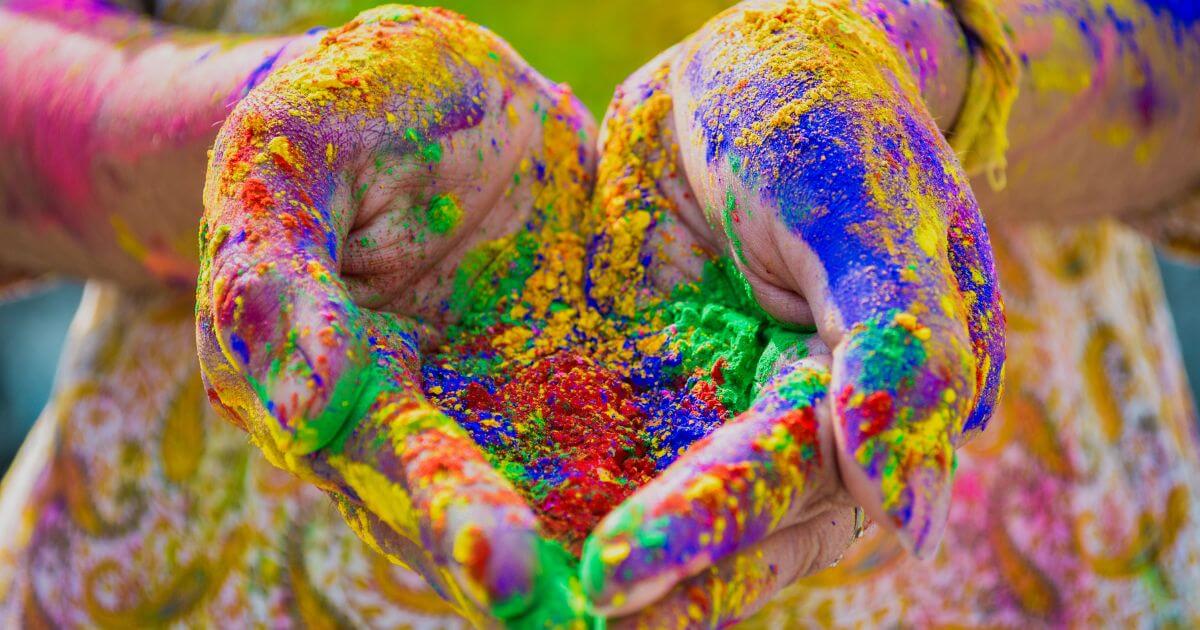Holi is a spring festival celebrated in a major part of India during the Indian month of Phalguna (February-March). Holi was originally a festival held to celebrate good harvests. However, it later turned into a religious festival.
In the present times, the celebrations during Holi involve very few religious activities. It has turned into a fun festival of colors for people of all ages. It is celebrated either by throwing liquid Holi colors in long syringes or balloons at each other or smearing dry colors on their faces.
Table of Contents
The Holi Colors
The colors used during Holi contain various chemical ingredients. These include mercury sulfate (red), lead oxide (black), aluminum bromide (silver), copper sulfate (green), and Prussian blue (blue). Additionally, mica dust and starch or wheat flour may sometimes be added. All these chemicals have the potential to cause allergic reactions.
Allergic Reactions
The immediate reactions which occur on the skin are:
- Itching, Stinging, irritation and/or a sensation of burning of the skin. These may start immediately after the color comes in contact with the skin
- Irritant contact dermatitis: the ingredient may cause an immediate inflammation (redness and pain) immediately after the color is applied on the skin.
- Erosions and erythematous lesions: The skin may become red and eroded (peeling off of the skin) with crusting and oozing of fluid
- Acute contact urticarial: “Nettle rash” characterized by redness with swelling occurring at the site of application of the color.
skin reactions that may occur after 2-3 days
- Allergic contact dermatitis: These cause itching and redness due to the development of an allergy to the chemical.
- Acquired ichthyosis or dryness of the skin characterized by fish-scale-like rashes, particularly on the arms, legs, and back
- Acneiform eruptions: These are pimple-like rashes appearing on the face and trunk due to blockage of the openings of hairs by ingredients in the colors.
- Acute paronychia: Due to excessive handling of water while sprinkling watercolors, some persons, especially diabetics, may develop swelling in and around their nails
- Certain diseases like seborrheic dermatitis (characterized by dandruff) and atopic dermatitis (eczema due to an inborn tendency to allergies) may also be aggravated by the Holi colors
Reactions In The Eyes
- Lacrimation: There may be increased watering if the colors of Holi come in contact with the face, hair, or even other parts of their body
- Dryness and a gritty feeling in the eyes especially if the colors come in contact with the eyes
- Serious diseases of the eye sometimes affecting vision may occur due to the Holi colors. These include conjunctivitis (redness of eyes) and corneal abrasions.
How To Save Your Skin From Damage
- Avoid facials, waxing, threading, and other beauty procedures 10 days prior to Holi
- Apply olive oil all over the body and hair 2-3 hours before applying Holi colors
- Apply Vaseline over the nail folds before playing with liquid Holi colors
- If you have a previous history of reaction to Holi colors, wear protective clothing such as full-sleeved clothes and waterproof garments while playing Holi
- Remove the colors immediately after playing Holi
- Shampoo the hair, followed by plenty of conditioning to protect the hair
If you develop any skin problems due to the Holi colors, consult a doctor immediately. Do not neglect these as they can often give rise to further diseases if left untreated.










Leave a Reply